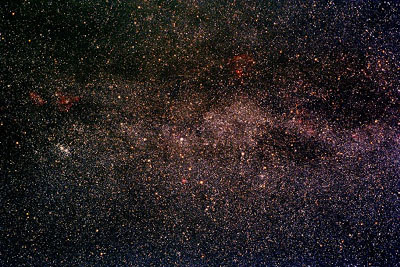Cassiopeia
The constellation of Cassiopeia is very easy to find. From the Plough, follow the line of the “pointers” through the Pole Star. The unmistakeable “W” shape of Cassiopeia’s five main stars is at an equal distance on the other side. Cassiopeia is circumpolar from the UK, meaning that it never sets, and so can be well observed throughout most of the year. On November evenings however it is right overhead.
Cassiopeia
If Rho were to go supernova this would be a remarkable coincidence because Cassiopeia has already played host to two of these exceedingly rare events in the last few centuries. One of these, observed famously by Tycho Brahe, occurred in 1572. Tycho’s star outshone Venus and was even visible in daylight for a period of about two weeks. Only a few very faint remnants are left of it now though. Cassiopeia’s second supernova is thought to have occurred about 100 years later but was not observed visually at the time. It is thought that this was because it was obscured by intervening clouds of gas and dust in the Milky Way. The remnant, known as Cassiopeia A, is however one of the strongest radio sources in the sky.
Lying as it does directly on the plane of the Milky Way, Cassiopeia contains many bright galactic clusters. The most prominent of these are Messier 52 &103 and NGC 663, 457 & 7789. For something a little more challenging, try tracking down the 12th magnitude galaxies NGC 185 & 147 – distant dwarf companions of the Great Andromeda Galaxy. Finally, Eta is a fine double star for small telescopes and Iota an outstanding triple.
POWERPOINT SLIDE SHOW (489KB)